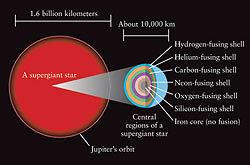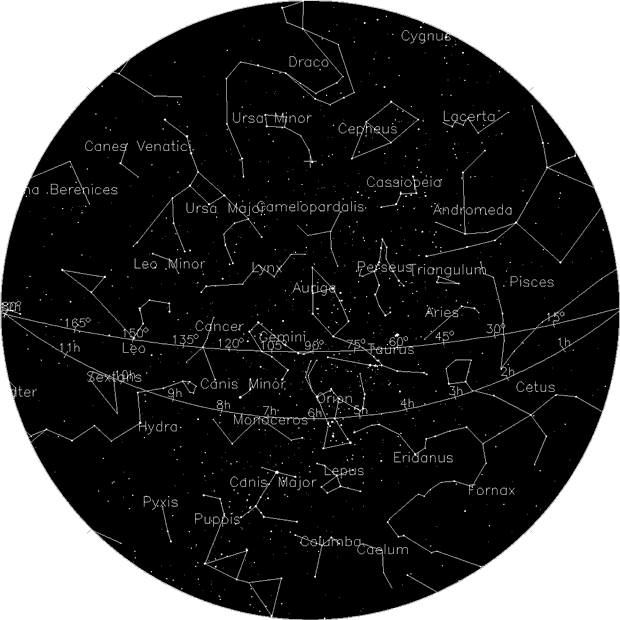DARK SKY HAPPENINGS - March 2020
Moab
UT (at City Hall)
38O34’ N Latitude 109O33’ W Longitude
4048 ft - 1234 m |
The Value in a Naturally Dark Night Sky
By Crystal White
Sunrise-Sunset
for March
(The time of sunrise and sunset assumes a flat horizon.
Actual time may
vary depending upon the landscape.) |
DATE |
SUNRISE |
SUNSET |
Sun, Mar 1 |
6:47 am |
6:12 pm |
Mon, Mar 2 |
6:46 am |
6:13 pm |
Tue, Mar 3 |
6:44 am |
6:14 pm |
Wed, Mar 4 |
6:43 am |
6:15 pm |
Thu, Mar 5 |
6:41 am |
6:16 pm |
Fri, Mar 6 |
6:40 am |
6:17 pm |
Sat, Mar 7 |
6:39 am |
6:18 pm |
Sun, Mar 8 |
7:37 am |
7:19 pm |
Mon, Mar 9 |
7:36 am |
7:20 pm |
Tue, Mar 10 |
7:34 am |
7:21 pm |
Wed, Mar 11 |
7:32 am |
7:22 pm |
Thu, Mar 12 |
7:31 am |
7:23 pm |
Fri, Mar 13 |
7:29 am |
7:24 pm |
Sat, Mar 14 |
7:28 am |
7:25 pm |
Sun, Mar 15 |
7:26 am |
7:26 pm |
Mon, Mar 16 |
7:25 am |
7:27 pm |
Tue, Mar 17 |
7:23 am |
7:28 pm |
Wed, Mar 18 |
7:22 am |
7:29 pm |
Thu, Mar 19 |
7:20 am |
7:30 pm |
Fri, Mar 20 |
7:19 am |
7:31 pm |
Sat, Mar 21 |
7:17 am |
7:32 pm |
Sun, Mar 22 |
7:15 am |
7:33 pm |
Mon, Mar 23 |
7:14 am |
7:34 pm |
Tue, Mar 24 |
7:12 am |
7:35 pm |
Wed, Mar 25 |
7:11 am |
7:36 pm |
Thu, Mar 26 |
7:09 am |
7:37 pm |
Fri, Mar 27 |
7:08 am |
7:38 pm |
Sat, Mar 28 |
7:06 am |
7:38 pm |
Sun, Mar 29 |
7:05 am |
7:39 pm |
Mon, Mar 30 |
7:03 am |
7:40 pm |
Tue, Mar 31 |
7:01 am |
7:41 pm |
|
For many stargazers looking up at Orion, the constellations alpha star is not looking so alpha lately. Knowing that this red supergiant star, approximately 1,400 times larger than our sun, Sol. Knowing that it is headed toward the end of its life at nearly 9-10 billion years old, which is ancient for a high mass star. Has the supernova happened, and we are still waiting for the approximately 60 light-years to see the star’s last brilliant shine, which will light up the night sky beyond the shine of Venus or Jupiter? The answer is, most likely not, but we are only guessing. Betelgeuse has been known to go through a dimming phase every 6 years, so this could be another dimming phase. To better understand what is happening, let’s take a more in-depth look into the end of life for a high mass star.
 For massive stars, stars over ten times the size of our sun, the end is quite extraordinary. Two main forces are working within a star, the push outward of nuclear fusion, and the push inward of gravity. When a star is stable, these forces are pretty balanced. Once all of the hydrogen in the core has been fused into helium, then hydrogen within the shell of the star begins to convert into helium. As this happens, the star puffs out like a marshmallow over a campfire. This is the red giant phase. So Betelgeuse being a super red giant, is in this phase of overall cooling and expanding and has been since I’ve been looking up at Orion. While the shell of the star is cooling and expanding, the core is extremely hot and energized, resulting in significant changes within the core. For massive stars, stars over ten times the size of our sun, the end is quite extraordinary. Two main forces are working within a star, the push outward of nuclear fusion, and the push inward of gravity. When a star is stable, these forces are pretty balanced. Once all of the hydrogen in the core has been fused into helium, then hydrogen within the shell of the star begins to convert into helium. As this happens, the star puffs out like a marshmallow over a campfire. This is the red giant phase. So Betelgeuse being a super red giant, is in this phase of overall cooling and expanding and has been since I’ve been looking up at Orion. While the shell of the star is cooling and expanding, the core is extremely hot and energized, resulting in significant changes within the core.
The size of the stars core is so large that once hydrogen has converted to helium, the center is so hot and active that more exotic types of fusion take place. Hydrogen > Helium, Helium > Carbon, Carbon > Neon, Neon > Oxygen, Oxygen > Silicon, and Silicon > Iron. Once Iron is fused in the core, the core is so dense it becomes unstable and implodes then explodes, creating the heat and energy needed for a whole slew of other elements.
So, is Betelgeuse going to supernova soon, the answer is no one knows? When it does, I’m sure we will all notice as we move about at night.
The Moab Dark Skies was established by the Friends of Arches and Canyonlands Parks in conjunction with the National Park Service and Utah State Parks Division of Natural Resources. |
MOON HAPPENINGS
Mar 2 - First Quarter at 12:57 pm
Mar 9 - Full Moon at 11:47 am
|
 For massive stars, stars over ten times the size of our sun, the end is quite extraordinary. Two main forces are working within a star, the push outward of nuclear fusion, and the push inward of gravity. When a star is stable, these forces are pretty balanced. Once all of the hydrogen in the core has been fused into helium, then hydrogen within the shell of the star begins to convert into helium. As this happens, the star puffs out like a marshmallow over a campfire. This is the red giant phase. So Betelgeuse being a super red giant, is in this phase of overall cooling and expanding and has been since I’ve been looking up at Orion. While the shell of the star is cooling and expanding, the core is extremely hot and energized, resulting in significant changes within the core.
For massive stars, stars over ten times the size of our sun, the end is quite extraordinary. Two main forces are working within a star, the push outward of nuclear fusion, and the push inward of gravity. When a star is stable, these forces are pretty balanced. Once all of the hydrogen in the core has been fused into helium, then hydrogen within the shell of the star begins to convert into helium. As this happens, the star puffs out like a marshmallow over a campfire. This is the red giant phase. So Betelgeuse being a super red giant, is in this phase of overall cooling and expanding and has been since I’ve been looking up at Orion. While the shell of the star is cooling and expanding, the core is extremely hot and energized, resulting in significant changes within the core. 